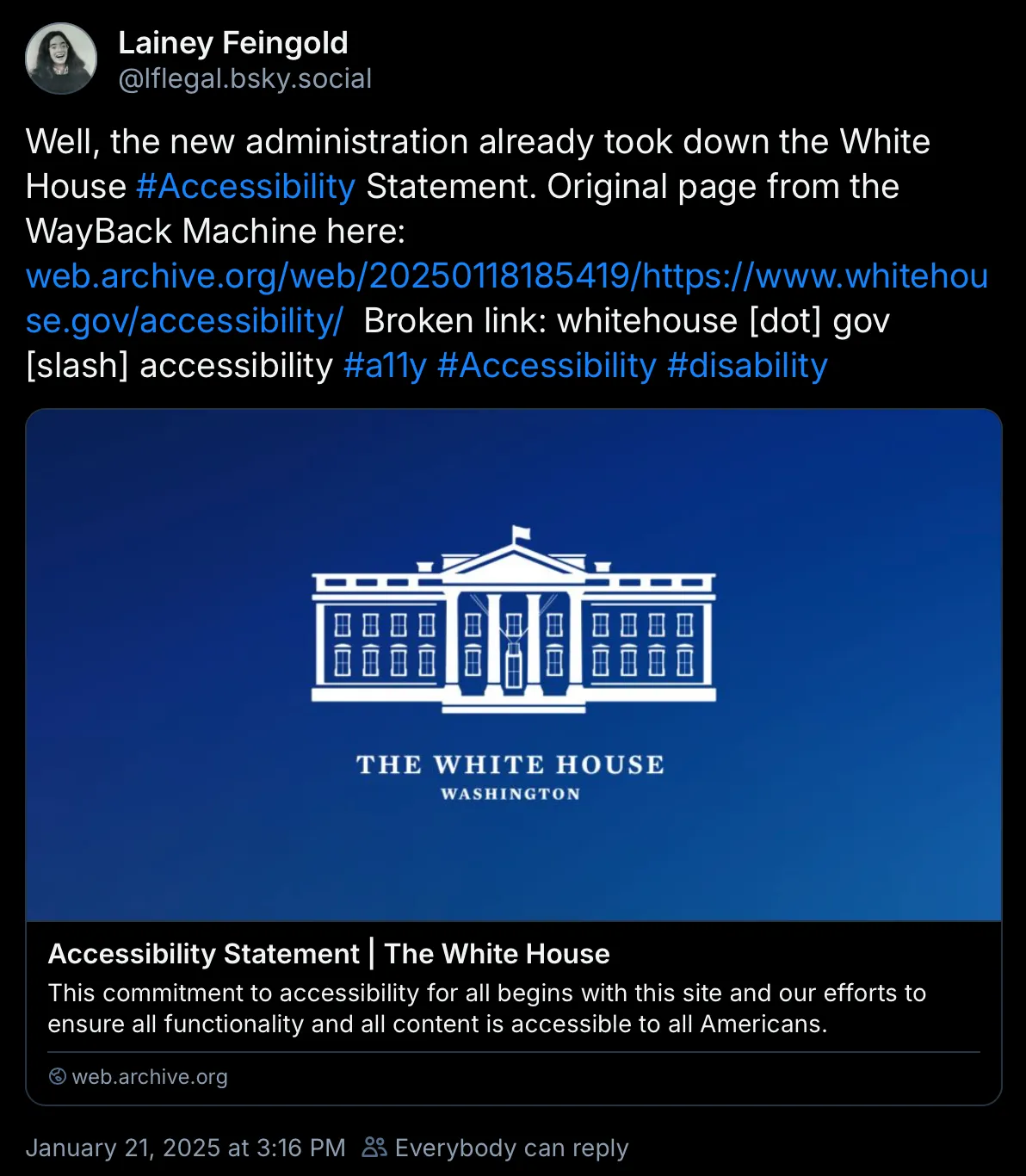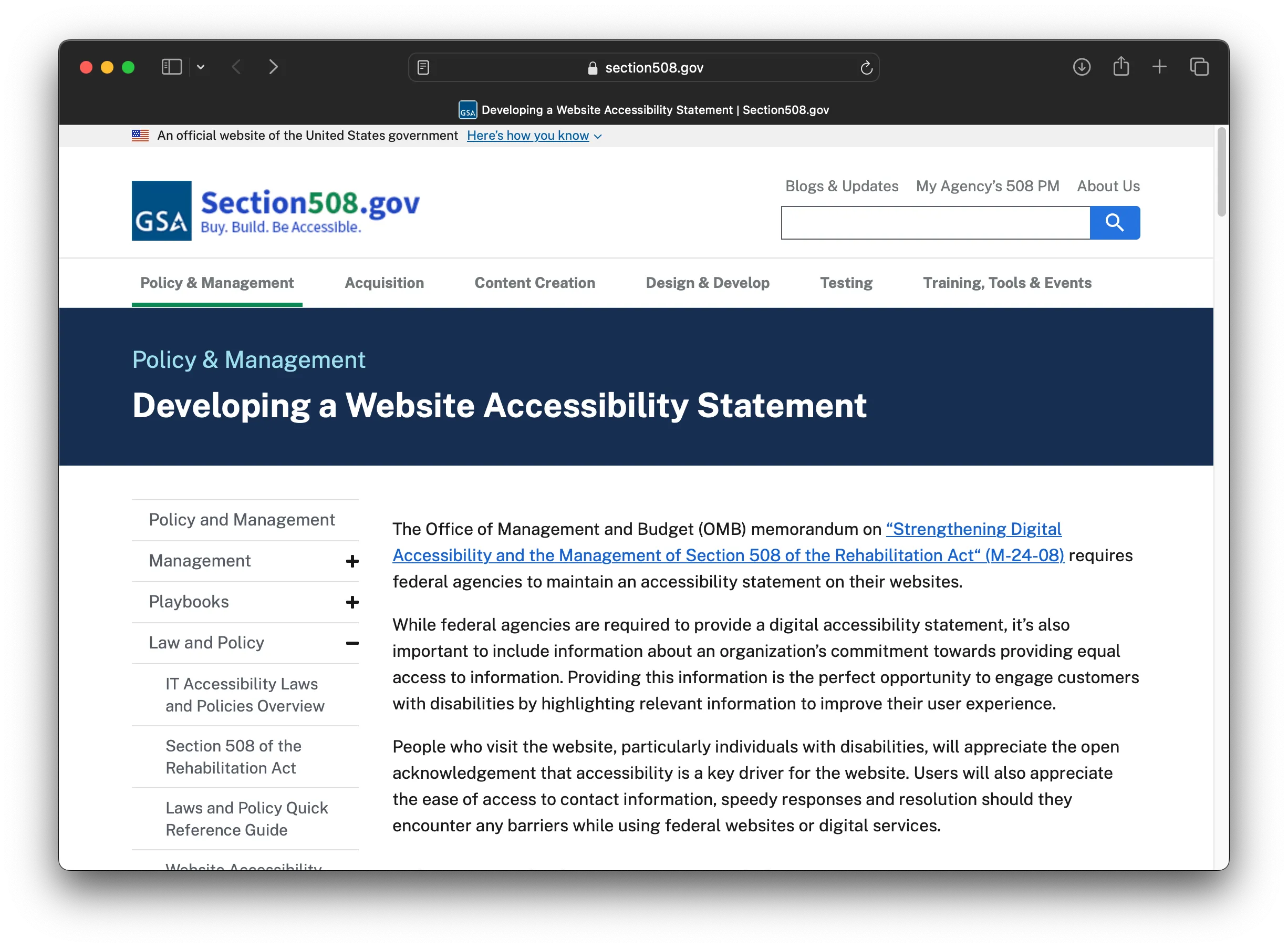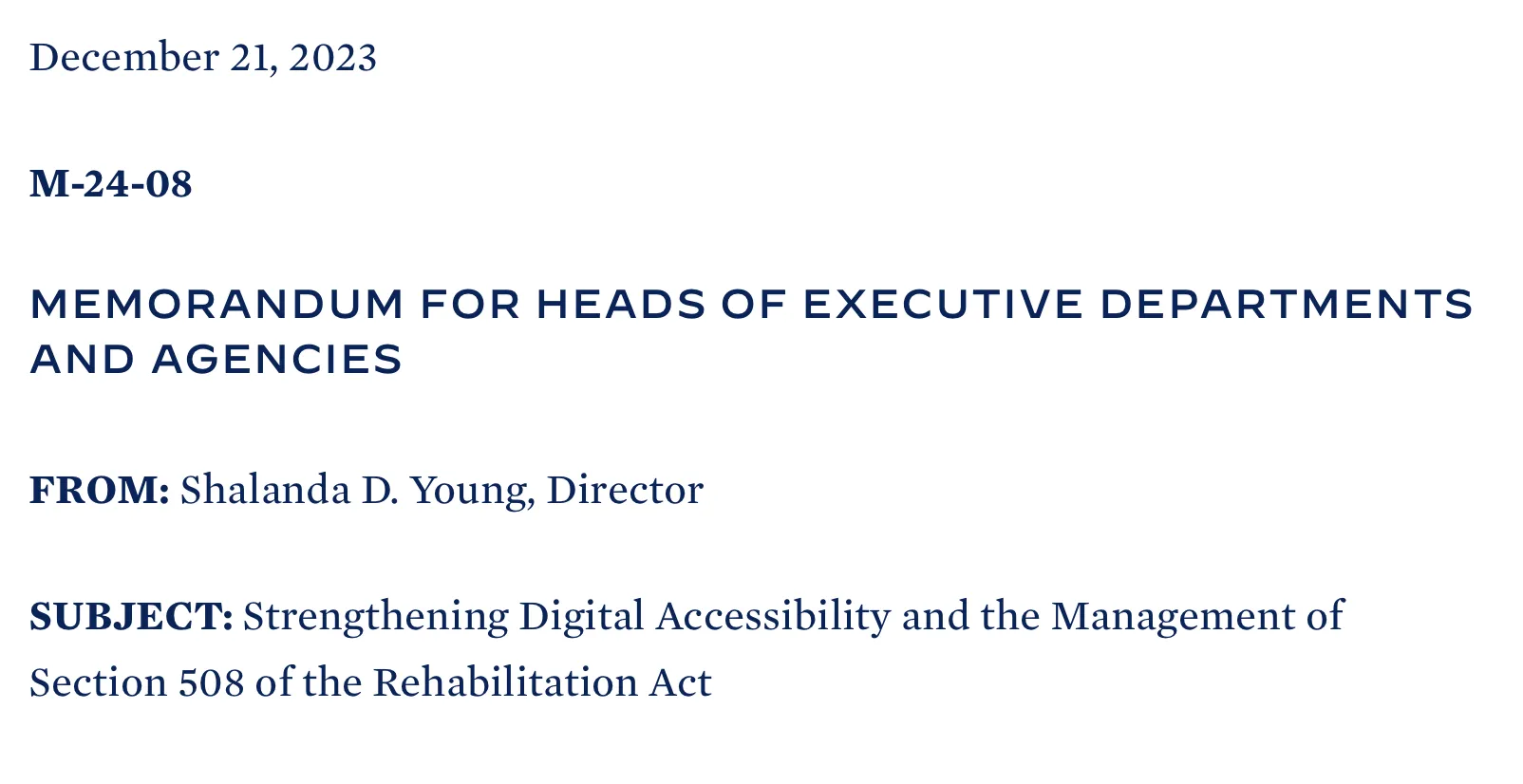Author’s note: I originally posted these findings in a Bluesky thread. I subsequently posted the beginning of the thread in a LinkedIn post as well and provided a link to the thread.
Updates since original publish
A missing Accessibility Statement
On January 21st, 2025 Lainey Feingold, disability rights lawyer and an author, posted on Bluesky that the White House website no longer had an Accessibility Statement.

According to the Section 508 website’s Developing a Website Accessibility Statement page, US federal agencies are required to maintain accessibility statements.
As of the morning of February 6th, this webpage is still online:

The first sentence states this requirement, linking to a memorandum that now 404s.
The Office of Management and Budget (OMB) memorandum on “Strengthening Digital Accessibility and the Management of Section 508 of the Rehabilitation Act“ (M-24-08) requires federal agencies to maintain an accessibility statement on their websites.
The memorandum link 404s because it’s a page from the Biden-Harris administration’s White House [dot] gov website. At the start of each new administration, the previous administration’s website is turned into a public archive. The Biden-Harris archive is located at BidenWhiteHouse [dot] archives [dot] gov. There, you can find memorandum M-24-08.

How the White House website archives are handled is an important context clue. I cannot say with 100% certainty, but based on my 10+ years of experience as a software engineer, it’s most likely the case that:
- The current website is a new collection of code totally separate from the previous version’s code.
- The previous version’s code was given a new URL (Biden White House [dot] archives [dot] gov).
- The new version’s code was given the main URL (White House [dot] gov).
This context is important because it gives us a good idea of whether or not the current website is intentionally less accessible for disabled people or is less accessible as a consequence of how it was coded from the start. My experience and mini accessibility audit of the new website tells me it’s the latter.
A mini accessibility audit
After reading Lainey Feingold’s post, I decided to do a quick accessibility check of the White House [dot] gov home page.
I found several links with “aria-hidden” and “tabindex=-1” HTML attributes. These attributes are not on link elements by default, which means they were added at the time the code was written.
What do these attributes to do? In short: they hide the links from assistive technology, like screen readers and speech recognition software, and makes them unreachable when using a keyboard instead of a mouse to navigate the website.
These are critical compliance errors under the Web Content Accessibility Guidelines (WCAG). But who can sue the US Federal Government for this?



Below these errors, I also found a carousel of linked images with the same problems of being unreachable by keyboard or assistive technology. The HTML elements are <span>s, instead of <button>s which are compatible with assistive technology and varying device types by default.
When the incorrect HTML elements are used in cases like this, a significant amount of additional code must be added to make them compliant with accessibility standards. This code has not been added. Much of it would be present in the HTML and it is not.

I also visited the News page (linked from the navigation bar at the top of the website), and found two areas with insufficient color contrast. These errors are also critical compliance issues according to WCAG.
The second-level navigation links have a contrast ratio of 4.05 to 1.

The pagination elements have a contrast ratio of 2.54 to 1, and also look like disabled buttons.

Dangerous precedent
As I asked above, who can sue the US Federal Government for this? The US Federal Government is in charge of holding companies accountable for web accessibility compliance. Is it going to sue itself?
With web accessibility compliance in the US already a treacherous battle for accessibility practitioners like myself, the US Federal Government not even holding itself accountable sets a dangerous precedent.
US companies seeking to cut corners in their websites and avoid complying with the Americans with Disabilities Act (ADA) will feel emboldened to discriminate against disabled people using a playbook written by the current US Administration.
